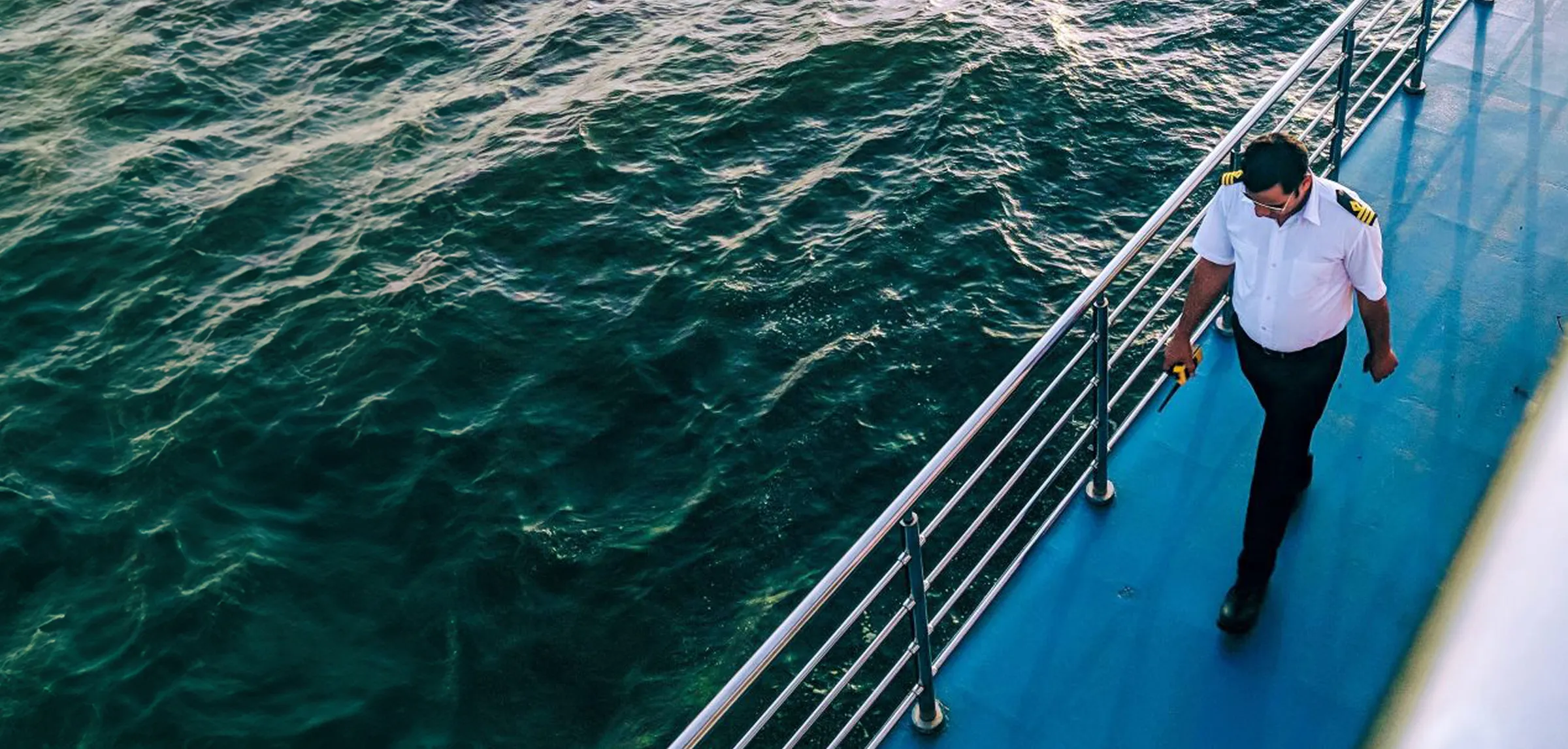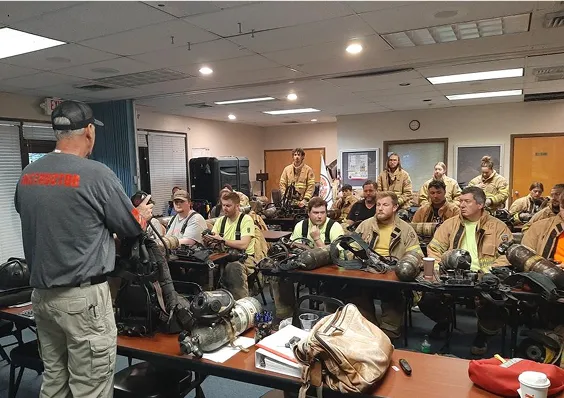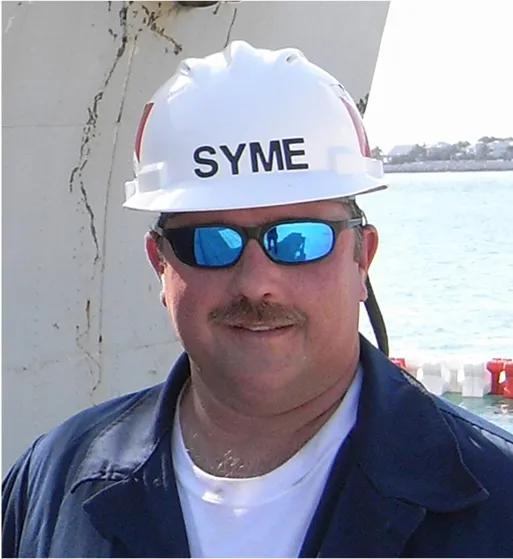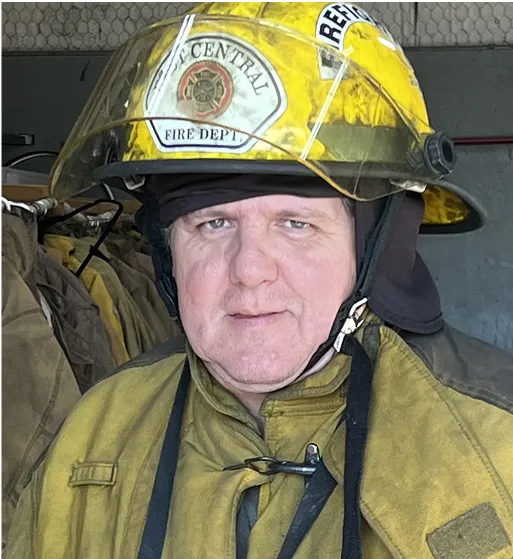Basic and Advanced Firefighting Combo Course for Mariners
Enroll today in Sea School’s five (5) day Basic and Advanced Firefighting Combo course and get classroom and hands-on experience in fire theory, prevention, detection, and fire team organization. Practice fire rescue operations with simulated scenarios using blind egress and other Coast Guard required exercises pertaining to shipboard fire control.
.webp)
Why Thousands of Mariners Choose Sea School?
Each year, over 7,500 students choose Sea School for their maritime training. We offer 30+ USCG-approved courses across in-person, online, and satellite formats, with training available at 6 locations nationwide. Team training is also available on-site or via satellite to meet company needs.

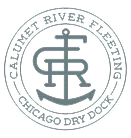
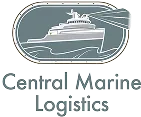


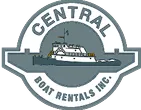

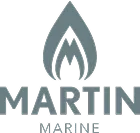








Sea School’s five (5) day training course
It educates mariners on fire prevention, detection, and firefighting techniques through theoretical instruction and hands-on demonstrations and simulations. Practical training includes: firefighting team drills, fire control & suppression, firefighting in different scenarios, boiler uptake & chemical fires, and rescue operations. With the successful completion of the course, students will be able to submit their course completion certificate to the USCG for official certification.

Basic and Advanced Firefighting Combination Completion and Certification Requirements
The Basic and Advanced Fire Fighting requirements of 46 CFR 11.201(h); AND
The Fire Fighting requirements for a national Tank Vessel or Tank Barge endorsement in 46 CFR 13.201(c)(3), 13.301(c)(3), 13.401(d), and 13.501(c)(3); AND
The Basic Fire Fighting standards of competence required by 46 CFR 11.302(a)(2) and 12.602(a)(2); STCW Code Section A-VI/1 and Table A-VI/1-2, as amended 2010, meeting the National Assessment Guidelines from NVIC 08-14(Ch-1) Tasks 2.1.A, 2.2.A, 2.3.A, 2.4.A, 2.5.A, 2.5.B, 2.5.C, 2.6.A, 2.7.A, 2.8.A, 2.8.B, 2.8.C, 2.9.A, 2.9.B, 3.1.A, 3.2.A, 3.2.B, 3.3.A, 3.4.A, 3.4.B, 3.5.A, 3.6.A, 3.7.A, 3.8.A, 3.8.B, 3.8.C, and 3.8.D; AND
The Advanced Fire Fighting standards of competence required by 46 CFR 11.303(a); STCW Code Section A-VI/3 and Table A-VI/3, as amended 2010, meeting the National Assessment Guidelines from NVIC 09-14(Ch-1), all Tasks.
Why Thousands of Mariners Choose Sea School?
Each year, over 7,500 students choose Sea School for their maritime training. We offer 30+ USCG-approved courses across in-person, online, and satellite formats, with training available at 6 locations nationwide. Team training is also available on-site or via satellite to meet company needs.
















Real-World Expertise
Excellence starts with a strong foundation. We believe in mastering fundamental skills, building confidence, and ensuring every mariner has the knowledge and expertise needed to succeed in their career.
Flexible Learning Options
True leadership is demonstrated through action. We foster a hands-on approach, where mariners learn by doing and gain real-world experience that prepares them for the challenges of the industry.
Career Advancement
In the maritime world, challenges are inevitable - but so are solutions. We encourage proactive thinking, problem-solving, and the courage to take initiative.
Industry-Recognized Certifications
We never settle for mediocrity. Whether in training, leadership, or problem-solving, we strive for the highest standards in everything we do.
A Strong Community & Industry Network
Success in the maritime industry requires a strong work ethic. We embrace a roll-up-your-sleeves mentality, knowing that real growth comes from effort and persistence.
Confidence & Leadership Development
Ttrue professionals must be ready to adapt. We believe in staying agile, embracing change, and continuously expanding our skills to meet new challenges.
We’ve developed comprehensive, engaging, and practical curriculum to set you up for success on the water
While the curriculum represented on the Sea School website is a general layout of course information, it is not the exact order in which lessons are taught.
- Safety & Principles
- Conditions for Fire
- Properties of Flammable Materials
- Fire Hazard and Spread of Fire
- Classification of Fires and Appropriate Extinguishing Agents
- Safety & Principles
- Conditions for Fire
- Properties of Flammable Materials
- Fire Hazard and Spread of Fire
- Classification of Fires and Appropriate Extinguishing Agents
- Fire Prevention Principles
- Ship Construction Arrangements
- Safe Practices
- Fire and Smoke Detection Systems
- Automatic Fire Alarm
- Fire Extinguishing Systems
- Fire Prevention Principles
- Ship Construction Arrangements
- Safe Practices
- Fire and Smoke Detection Systems
- Automatic Fire Alarm
- Fire Extinguishing Systems
- General Principles
- Smothering Effect Systems
- Inhibitor Effect Systems
- Cooling Effect Systems
- Chemical Powder Applicants
- General Principles
- Smothering Effect Systems
- Inhibitor Effect Systems
- Cooling Effect Systems
- Chemical Powder Applicants
- Fire Hoses and Nozzles
- Semi-Portable Fire Extinguishers
- Portable Fire Extinguishers
- Fireman’s Outfit
- Breathing Apparatus
- Fire Hoses and Nozzles
- Semi-Portable Fire Extinguishers
- Portable Fire Extinguishers
- Fireman’s Outfit
- Breathing Apparatus
- General Emergency Alarm
- Fire Control Plans and Muster List
- Communications
- Personnel Safety Procedures
- Periodic Shipboard Drills
- Patrol Systems
- General Emergency Alarm
- Fire Control Plans and Muster List
- Communications
- Personnel Safety Procedures
- Periodic Shipboard Drills
- Patrol Systems
- Knowledge of Fire Safety Arrangements
- Fire Alarms and First Actions
- Firefighting
- Knowledge of Fire Safety Arrangements
- Fire Alarms and First Actions
- Firefighting
- Small Fires
- Extensive Fires
- Drills in Smoke-Filled Spaces
- Small Fires
- Extensive Fires
- Drills in Smoke-Filled Spaces
- Areas of Fire Hazard
- Fire Precautions
- Areas of Fire Hazard
- Fire Precautions
- Communication
- Coordination
- Fire Parties
- Communication
- Coordination
- Fire Parties
- Contingency Plans
- Strategy and Tactics of Various Parts of the Ship
- Contingency Plans
- Strategy and Tactics of Various Parts of the Ship
- Ship at Sea
- Ship in Port
- Ship Having Cargo of Dangerous Goods
- Oil Tankers
- Ship at Sea
- Ship in Port
- Ship Having Cargo of Dangerous Goods
- Oil Tankers
- Fire Alarms
- Fire Detection Equipment
- Fixed Fire Extinguishing Equipment
- Fire Main, Hydrants, Hoses, and Nozzles
- Portable and Mobile Fire Extinguishing Equipment
- Fireman’s Outfits
- Fire Control Plans
- Fire Alarms
- Fire Detection Equipment
- Fixed Fire Extinguishing Equipment
- Fire Main, Hydrants, Hoses, and Nozzles
- Portable and Mobile Fire Extinguishing Equipment
- Fireman’s Outfits
- Fire Control Plans
- Dry Distillation
- Chemical Reactions
- Boiler Uptake Fires
- Fires in Water-Tube Boilers
- Dry Distillation
- Chemical Reactions
- Boiler Uptake Fires
- Fires in Water-Tube Boilers
- Assessment of Cause of Incidents Involving Fire
- Assessment of Cause of Incidents Involving Fire
A Simple 3-Step Process to Get Certified and Start Your Maritime Career
Choose Your Course
Pick the course that fits your experience level and sea time and select the available format that works for you (in-person, Zoom, or online).
Enroll & Prepare
Register online or at a Sea School location. Ensure you meet eligibility requirements and start reviewing the provided study materials.
Get Certified
After finishing the course, you will need to submit your application to the Coast Guard to receive your Merchant Mariner Credential (MMC).

What Our Clients Say
What We Provide:
What Students Need to Bring:
[01] Students should bring a pencil, highlighter, and notebook for the classroom
[02] Students will need to bring the following:
- Long pants, socks, and closed-toed shoes or boots (no flip-flops or open toed shoes)
- Some way to tie back longer hair
- Insurance regulations require that you be clean shaven so the breathing mask seals securely (mustaches are OK)
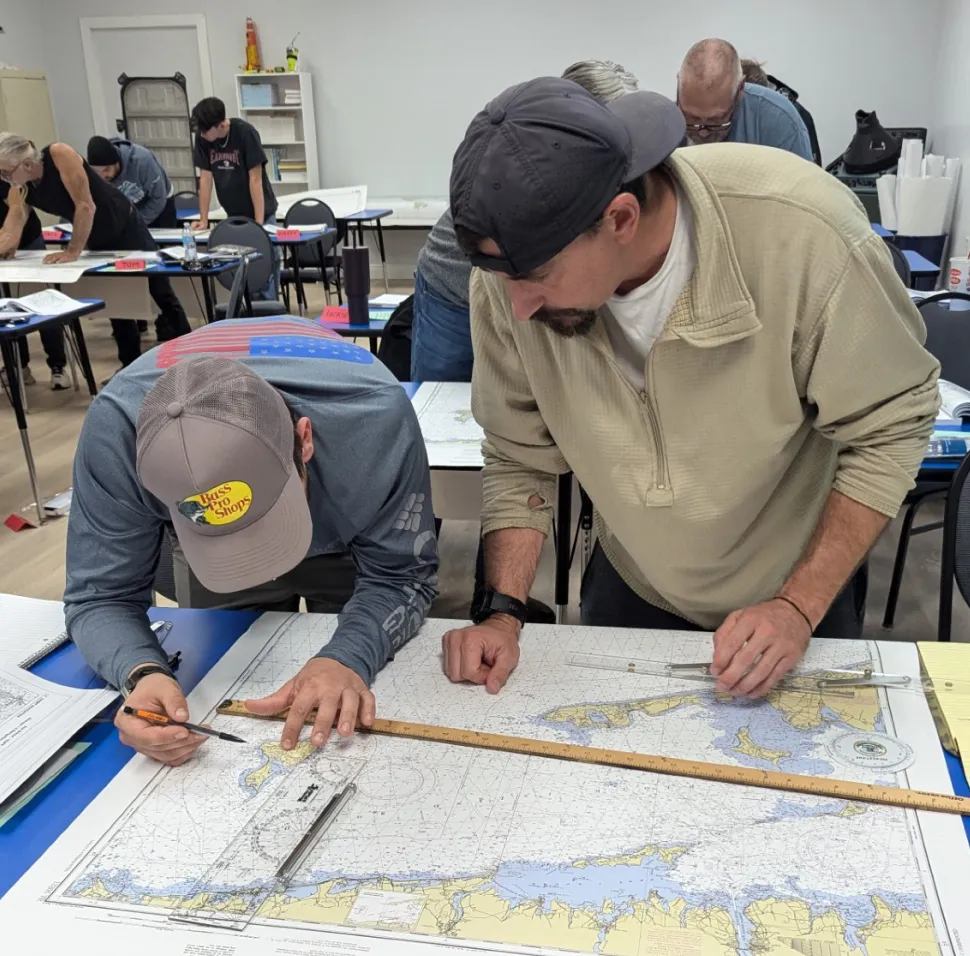
Advance your Maritime Career
All the answers you’ll need before enrolling in the Basic and Advanced firefighting course
The Basic and Advanced Firefighting Combination course is a five (5) day course that combines the basic aspects of fire theory and detection with the more advanced concepts of team management and rescue operations.
The Basic and Advanced Firefighting Certification is required for mariners in the following positions:
- Master of vessels under 200 GRT (Ocean Service)
- Master or Mate on vessels over 200 GRT
- Master of Uninspected Towing Vessels (Oceans)
- Licenses for Mobile Offshore Drilling Units (MODU)
- Engineer Licenses & Endorsements
- Tankerman Endorsements
A combination course is more efficient as it consolidates training into a shorter, intensive period. The Sea School Basic and Advanced Firefighting Combination course is a five (5) day course.
Being clean shaven where the Self-Contained Breathing Apparatus (SCBA) seals to your face helps ensure your SCBA can function properly. It is mandated by the USCG for all practical fire training. Mustaches are typically allowed.
Upon successful completion of this course and submission to the USCG, you will receive certifications for both Basic and Advanced Firefighting, meeting USCG and STCW requirements.
The Sea School provides students with all necessary protective equipment for training. However, we ask students to wear or bring the following:
- Long pants, socks, and closed-toed shoes or boots (no flip-flops or open toed shoes)
- Some way to tie back longer hair
- Insurance regulations require that you be clean shaven so the breathing mask seals securely (mustaches are OK)
The Sea School offers Basic and Advanced Firefighting Combination courses at several of our brick and mortar locations. Applicants have to call to register for BFF since it's part of STCW Basic Training, not a stand-alone course. You can also find a list of approved courses on the NMC website under the “Approved Courses” tab. Upon completion of the course, mariners receive a Course Completion Certificate that they must submit alongside a USCG application for official Basic and Advanced Firefighting certifications. It is important to note that a Course Completion Certification is NOT a substitute for the official USCG STCW credential.
No. Only the USCG can issue official documentation and certifications. To obtain official certifications, mariners must:
- Complete the necessary USCG application form.
- Submit both the Sea School Course Completion Certificate and USCG application form to the USCG.
The USCG then processes the application and issues the official certification.
Your Journey Begins Here – Get Certified & Get on the Water!
Helping thousands of mariners every year, Sea School is a leader in the maritime education space. Whether you are new to the industry or looking to add onto your Merchant Mariner Credential, find the courses right for you at Sea School.
